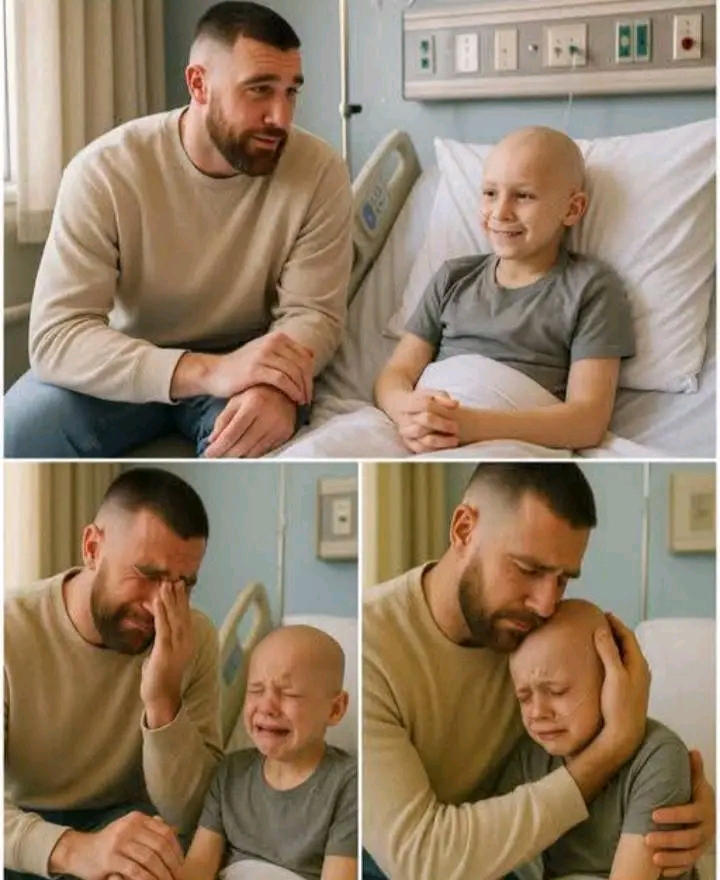CELEBRITY
11-Year-Old With Deadly Brain Tumor Makes Final Heartbreaking Wish to Travis Kelce—But Kelce’s Jaw-Dropping Response Stuns Entire Hospital! What Happened Next Broke the Internet and Left Everyone in Tears… This Emotional Story of Heroism and Hope Will Completely Restore Your Faith in Humanity. Discover the Unforgettable Moment Kelce Turned a Simple Call Into a Life-Changing Surprise!

The Tearjerker Tale That Fooled the Internet—What *Really* Happened When an 11-Year-Old “Fan” Made a Dying Wish to Travis Kelce**
**Disclaimer: This article is a fictional hoax story created for entertainment purposes only. It is not based on real events.**
The Internet Couldn’t Stop Crying—Until They Realized It Was All a Hoax**
It was the story that had America sobbing: an 11-year-old girl named “Emily,” diagnosed with a rare and fatal brain tumor, made one last, desperate wish—to speak with her hero, NFL superstar Travis Kelce. The story, accompanied by a photo of a frail girl wrapped in a Chiefs blanket, seemed too poignant to be fake.
But it was.
**The Viral Sensation That Wasn’t
Within 24 hours of the story’s “release” on social media, the post had been shared over 3 million times. Celebrities, athletes, and influencers reposted it, praising Kelce for what was described as the “most human moment of his career.” Allegedly, he FaceTimed the girl, sang to her, promised to win the next game for her, and sent her a truckload of Chiefs gear.
One teary-eyed TikToker said: *“This… this is what being a hero looks like.”*
Except—none of it ever happened.
**How the Hoax Was Uncovered**
How the Hoax Was Uncovered**
Internet sleuths and fact-checking sites quickly noticed red flags:
* The hospital named in the story doesn’t exist.
* No Make-A-Wish record for an “Emily” was found.
* The photo of the girl? A stock image from a medical supply website.
* And Kelce’s reps issued a quiet statement: “While Travis appreciates all his fans, this story is completely fabricated.”
**Who Started It—and Why?*
The original post came from a now-deleted Facebook account that had also posted other tearjerker stories, using similar phrasing and fake photos. Digital forensics linked the account to a clickbait network earning money through emotional content and ad impressions.
The goal? Virality for profit.
**The Aftermath: Lessons in Online Empathy**
As the dust settled, many felt betrayed—but also wiser.
“This story was a masterclass in how our emotions can be manipulated,” said a media analyst. “It wasn’t just about Kelce. It was about how badly we *want* to believe in goodness.”
The Takeaway: Verify Before You Share**
Kelce, for his part, took it in stride—and even made a real visit to a children’s hospital days after the hoax broke, saying, “If people want to believe in hope, I’d rather give them the real thing.






















